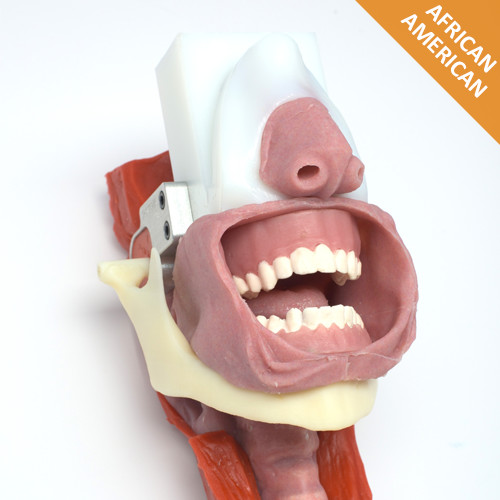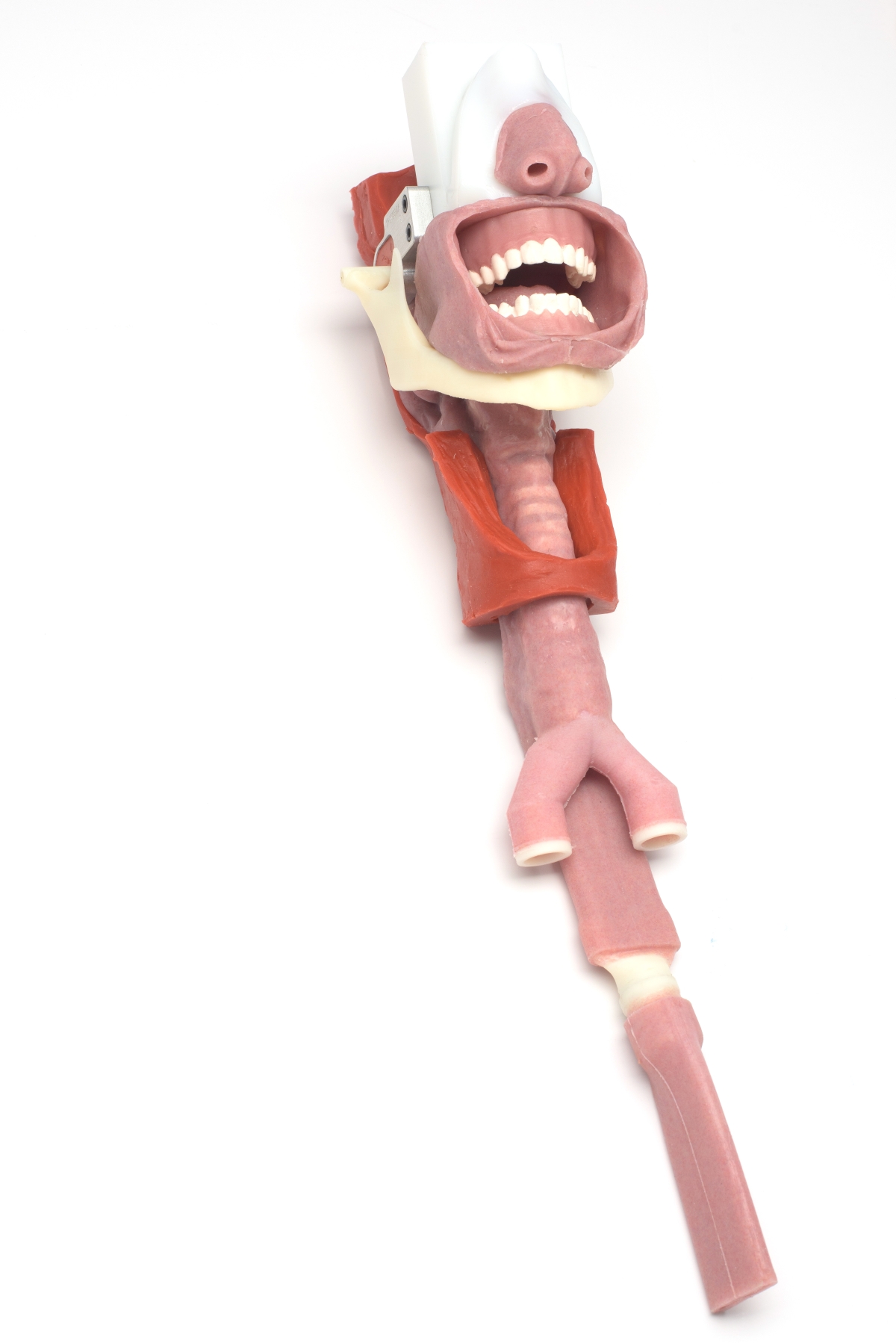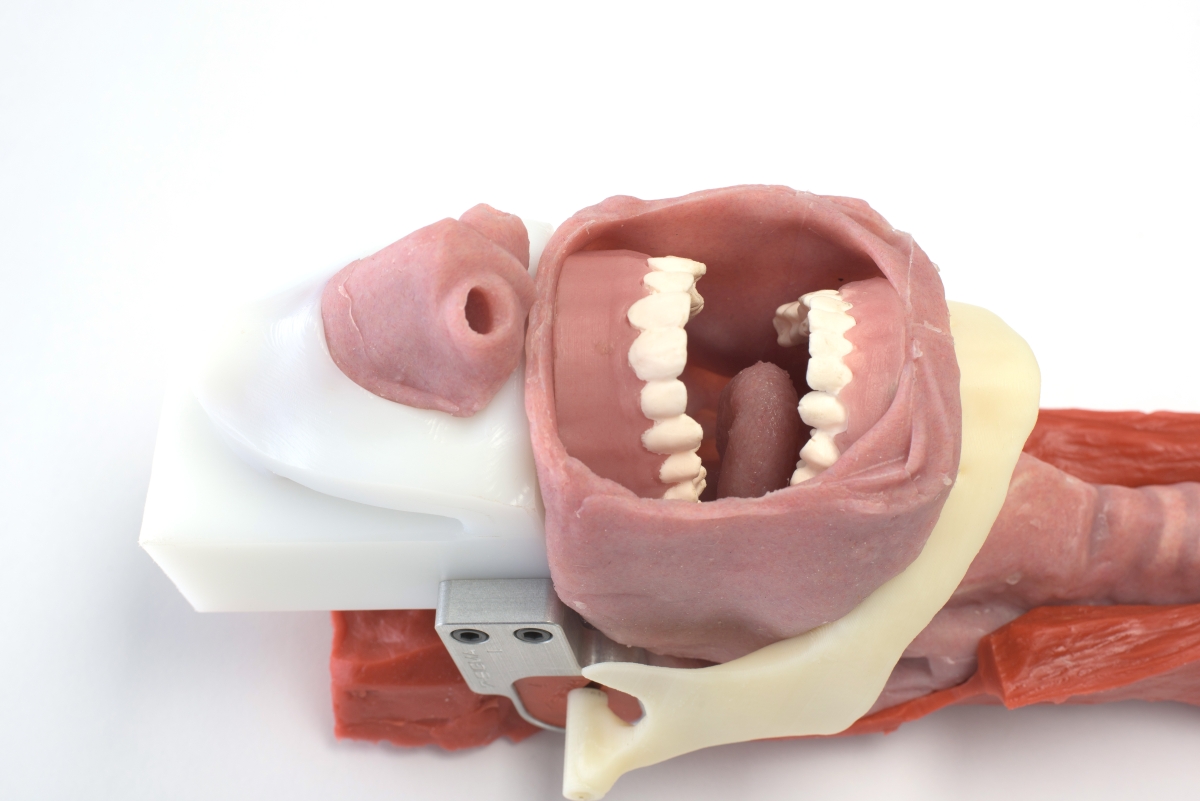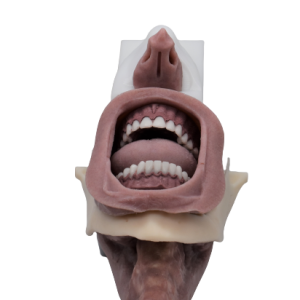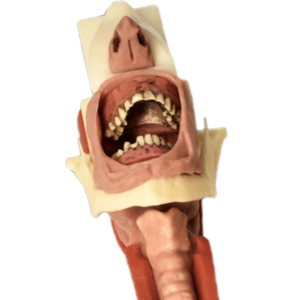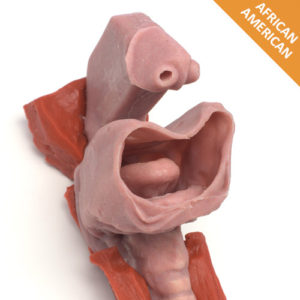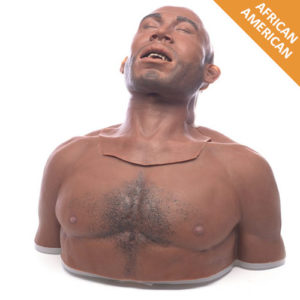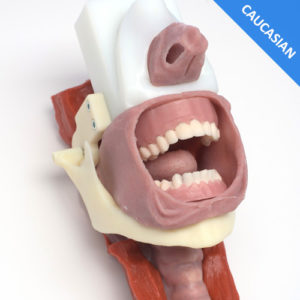Description
The Advanced Complete Airway prioritizes simulation of human tissue’s characteristic delicacy and recreation of the anatomical structures and geometry typical of human anatomy. The range of motion and relative resistance of the jaw demonstrates the forces required to open the mouth. A realistic tongue establishes the technique needed to sweep the tongue when inserting the laryngoscope. The vocal cords, vallecula, and functioning epiglottis provide key landmarks and visual confirmation of successful intubation. Asymmetrical nasal passages demonstrate the nuances of nasal intubation. The relative asymmetry of the bronchial bifurcation has been recreated so that a right mainstem intubation occurs if imperfect technique is used. The replaceable teeth will incur trauma and damage at similar forces as real teeth. In sum, the Advanced Airway provides the best simulation substitute to a real person.
The Rugged Complete Airway Assembly Module is constructed as a single, hyper realistic and anatomically correct replaceable unit using harder, more wear resistant rubber.
The tongue’s feel and movement is critical in providing correct intubation technique. This is achieved by a tongue design using a thin, multi-layer silicone rubber skin with an interior of high quality gel. The tongue construction, like a human tongue, can be damaged if improper techniques are used. The Rugged tongue is a more durable version than that of the Challenging unit but will provide longer wear.
The epiglottis is a multi-layer, anatomically correct, construction to provide realistic movement of the epiglottis upon proper placement of the laryngoscope. This is a delicate region in a human as well as the simulated airway, and should be considered as such. Again, the Rugged unit is a more durable version and will provide longer wear then the Challenging model.
The vocal chords are easily seen upon lifting of the epiglottis. The trachea has the tracheal rings that can be lightly felt with use of a bougie. The bifurcation leads to right stem intubation. The esophagus is designed to respond to an intubation in two ways. An internal design and a check valve provide the ability to use a “wee” device that will draw a vacuum, as in a human, indicating esophageal intubation. Also, a stomach extension produces a gurgle sound when air is put through the tube.
The teeth are modeled after an individual the size of the manikin facial features. The material used for the teeth will break at similar forces of that of real teeth. The teeth are easily removed and replaced.
The jaw movement is critical to function. The jaw mounting bracket, in conjunction with the face placement, is designed to give the side to side and jaw thrust movement necessary to realism.
The nasal passage is derived from a person that has slightly different right and left nasal passage, which teaches the user to try both passages. The nose and opening passage realistically represent the African American manikins.
The modularity provides replacement of all modular components using no tools within a timeframe of 5 minutes or less.

